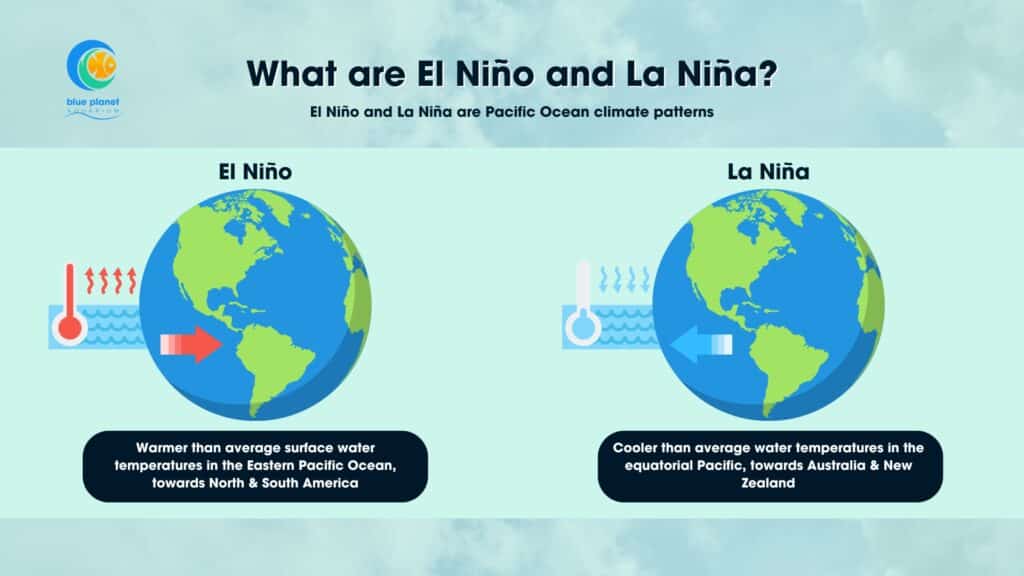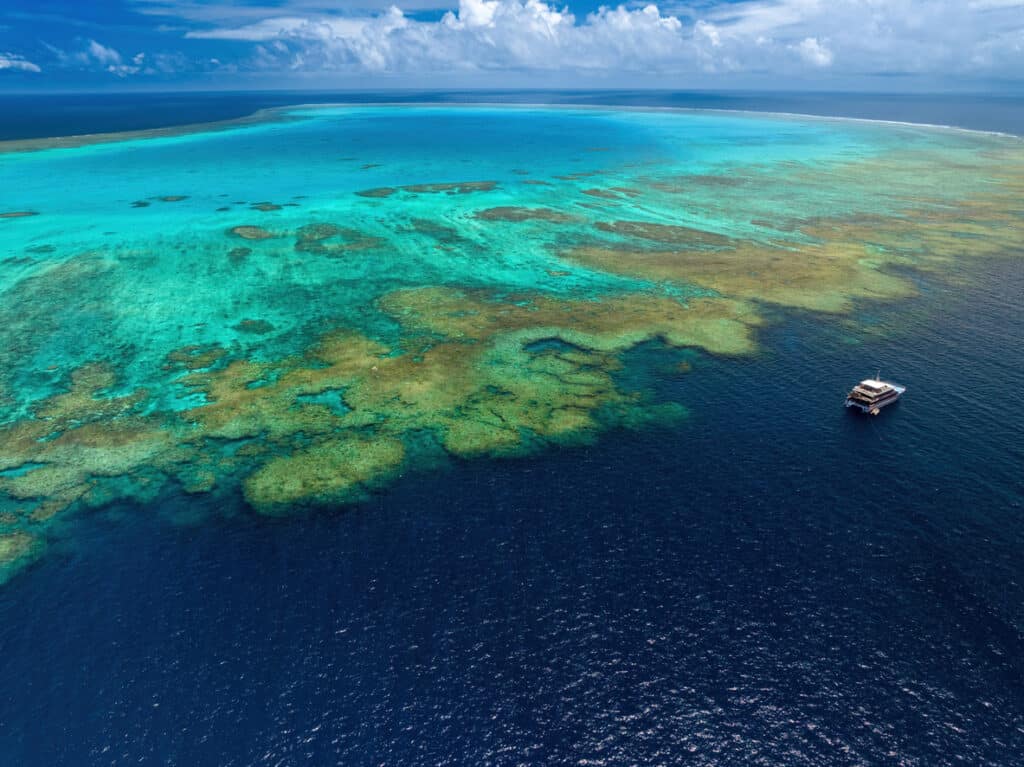El Niño vs La Niña: What are They?
Weather is a complex system influenced by lots of factors including temperature, atmospheric pressure, cloud formation, wind, humidity, and rainfall. Even minor changes in these elements can create different weather patterns and cause ripple effects across the globe.
Among the many fascinating weather phenomena are El Niño and La Niña, both of which are part of a larger climate pattern known as the El Niño Southern Oscillation (ENSO). These events significantly impact global weather and climate systems, showcasing the complexity of the Earth.
El Niño and La Niña definitions
El Niño and La Niña are opposite phases of the ENSO cycle, a natural climate phenomenon that occurs over the tropical Pacific Ocean. El Niño refers to the warm phase, while La Niña refers to the cool phase. These phenomena represent significant deviations from average ocean temperatures and have profound effects on weather patterns around the world.
What is El Niño?
El Niño is characterised by warmer-than-usual sea surface temperatures in the tropical eastern Pacific Ocean. An El Niño event is typically declared when sea temperatures in this region rise at least 0.5°C above the long-term average.
This warming is most pronounced in the tropical eastern Pacific, where it leads to unusually warm weather. The effects of El Niño extend beyond the Pacific, influencing weather patterns globally, often resulting in wetter, warmer conditions in various regions.
What is La Niña?
La Niña, on the other hand, is marked by cooler-than-average sea surface temperatures in the equatorial Pacific. A La Niña event is usually declared when sea temperatures fall 3-5°C below the long-term average. This cooling effect results in cooler, drier weather in the tropical eastern Pacific, with widespread impacts on global weather, typically causing cooler, wetter conditions in various regions.

Frequency of El Niño and La Niña events
El Niño and La Niña episodes generally occur every 2 to 7 years and typically last between 9 to 12 months. The cycles are part of a natural, recurring pattern, but their timing and intensity can vary. Scientists monitor sea surface temperatures and atmospheric conditions to predict El Niño and La Niña events and assess their potential impacts.
How do El Niño and La Niña affect the weather?
The ENSO cycle exemplifies the close interaction between the atmosphere and the ocean. During an El Niño event, the spread of warmer water across the Pacific Ocean results in more heat being released into the atmosphere. This process leads to increased global temperatures, creating damp and warm air masses. Conversely, La Niña events cause the spread of cooler water, reducing heat in the atmosphere and lowering global temperatures.
Global impacts of El Niño and La Niña
The impacts of El Niño and La Niña extend far beyond temperature changes. These events can significantly affect rainfall, tropical storms, and even carbon dioxide levels worldwide.
For example, El Niño often leads to increased rainfall in some regions, causing floods, while other areas may experience droughts due to altered atmospheric circulation patterns. La Niña typically brings the same effect to opposing regions.

Environmental and economic consequences
The 2015-16 El Niño event highlighted the dramatic effects that these phenomena can have, disrupting infrastructure, food, and energy systems.
During this El Niño event, less cold water rose to the surface off the west coast of South America, reducing nutrient availability. This decline in nutrients impacts marine life and the local fishing industry, leading to economic consequences for South American countries.
As well as this, both El Niño and La Niña can exacerbate extreme weather events, contributing to the frequency and severity of hurricanes, cyclones, and other storms.
El Niño and La Niña are crucial components of the Earth’s climate system, influencing global weather patterns and impacting natural habitats, wildlife, and human societies.
Understanding these phenomena helps us to better predict and mitigate their effects, allowing for more effective environmental conservation and management strategies.
For more information on how these weather patterns affect marine life and ecosystems, book your tickets to Blue Planet Aquarium and ask one of our marine experts for their insights!


